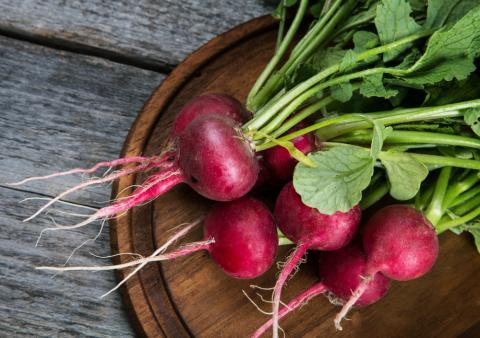
The summer may be coming to an end but that does not mean that your garden has to go to bed quite yet. There are several solutions for extending the season of your garden including small hotboxes, row covers, and selecting fast growing vegetables that you will be able to harvest long before the snow flies. In the same way you might plant cold weather crops at the start of spring, you can choose cold weather crops at the end of summer. Here is a list of crops that will grow well at the end of summer.
Shoots (10-20 days)
Shoots are ready to harvest in 10 to 15 days and make a fantastic addition to salads and stir fry. If you have a short window of opportunity I recommend growing several varieties of shoots. To grow shoots, soak the seeds for 8 hours before thickly spreading them across the top of your soil or growing medium. Cover the seeds with two layers of soaking wet newspaper. This will keep the seeds wet and assist with their germination. Keep the seeds covered and damp for 2-3 days until the shoots begin to push the newspaper up. You can begin to harvest the shoots once they are 4” tall by giving the growth a haircut at the soil line.
Suggested plants for growing shoots
- Sunflower: The Helianthus annuus or common sunflower tastes like sunflower seeds!
- Buckwheat: These seeds must be soaked for two days. Be sure to rinse and drain every 12 hours before planting. Buckwheat is deliciously creamy (and healthy, too).
- Field Pea: These shoots give you the taste of peas in half the time (and make delicious pesto!).
Radish (20-25 Days)
The next fastest plant to grow is the trusty old radish. The radish is one of the first plants in the garden to be ready in spring and it will be quickly ready again in the fall. Be sure to choose a variety like Cherry Red or Easter Egg that has a relatively small root to ensure they will be ready to harvest quickly. Plant the seeds half an inch deep, one-and-a-half inches apart, in rows that are four inches apart.
Spinach (30-35 Days)
Fast growing and cold hearty, spinach in the garden is an excellent way to extend the growing season. Sow the seeds half an inch deep and two inches apart in rows that are five inches apart. The initial growth of the spinach is four leaves. You can start harvesting the leaves once there are more than five on a plant. I recommend having plenty of plants growing so that you can harvest one leaf at a time rather than waiting for an entire plant to mature. This method of harvesting allows the plant to continue its production while you collect a yield.
Broccoli Rabe/Raab (40-45 Days)
Raab is my personal favorite vegetable and it loves cool weather. In fact, growing raab in hot weather will most likely result in a bunch of raab flowers bolting rather than in actual raab. If you are unfamiliar with broccoli raab, you should know that it is not actually related to broccoli but turnips! It does not produce a proper head the way broccoli does but rather a miniature set of buds that you harvest with the surrounding leaves. I love using raab in stir fry with a little honey and soy sauce or tamari. Plant seeds a half-inch deep, five inches apart, in rows one inch apart. When it’s time to harvest, be sure to leave parts of the plant growing to it can make more raab.
Kale (50-55 Days)
Kale has become a cold weather garden classic. It can over winter even in the harshest conditions as long as it is given a little protection. I have seen kale leaves covered in a quarter of an inch of snow, still resilient and green! It is truly a cold weather plant and is easy to grow. You can find many kale recipes here on basmati.com, such as this Mediterranean salad recipe, and these easy to make kale chips. Plant kale seeds a little earlier than the other plants to make sure the plants have time to harden before you start plucking their leaves. Plant seeds a half-inch deep, six inches apart, in rows one inch apart.
There is still plenty of time in the growing season to grow these plants. I suggest you explore other growing options by simply remembering what you may have grown in the Spring. Perhaps you have a favorite variety of lettuce mixes or want to sprout a couple little herbs. Feel free to experiment with what can handle the colder weather and what cannot. Another way to extend the season is by planting winter hardy vegetables such as winter cabbage. With these various solutions you can enjoy fresh veggies from your garden long after the farmer’s markets have stopped for the year. Happy gardening!








